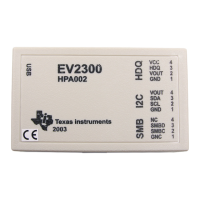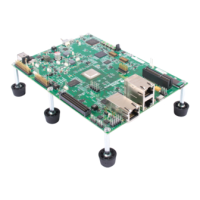25
August ’01 Chapter 2. Electrical Description
2.6 End-of-burst Detector
The Base Station transmits after a low frequency (LF) Wake burst data to the Identification
Device by means of 100% amplitude modulation (see Figure 12). At the resonant circuit of
the Identification Device this results in LF bursts and LF burst pauses or at least LF amplitude
drops depending on the duration of transmitted burst pause and the quality factor of the in-
volved resonant circuits. Coupling and therefore the distance between Base Station and Iden-
tification Device resonant circuit and the frequency deviation from ideal resonance frequency
has a big influence to the duration of the amplitude drop. In the near distance range amplitude
drops slower when the transmitter is deactivated and increases faster when activated. In the
far distance range the amplitude drops faster but increases slower.
After detection of a Wake signal the End-Of-Burst (EOB) Detector is activated (see Figure
4). The EOB-Detector has to detect any LF amplitude drop, which exceeds 50% of the initial
amplitude and has to convert it into a digital signal (EOBI). This signal is fed to a Pulse Po-
sition Demodulator circuit and, if it matches the memory defined pattern, to output EOBA.
Figure 12: EOB Detector and Pulse Position Modulator Function
2.7 Pulse Position Demodulator
If Wake Pattern detection is activated, the Pulse Position Demodulator starts to work with oc-
TRANSMITTER ON
TRANSMITTER OFF
HIGH BIT
TXCT-
tonH
WRITE
tbitH tbitL
READ
tRD
TRANSMITTER RF
TRANSPONDER RF
near far
toff tonL toff toff
toffTRP(near)
toffTRP(far)
WAKE
twake
toffi
LOW BIT
END OF BURST (EOBI/EOBA)
toffTRP(near)
toffTRP
(far)
tHdet
tHdet
LAST BIT
WRITE DATA
tHdet
tonL
3DWR01A.CH4

